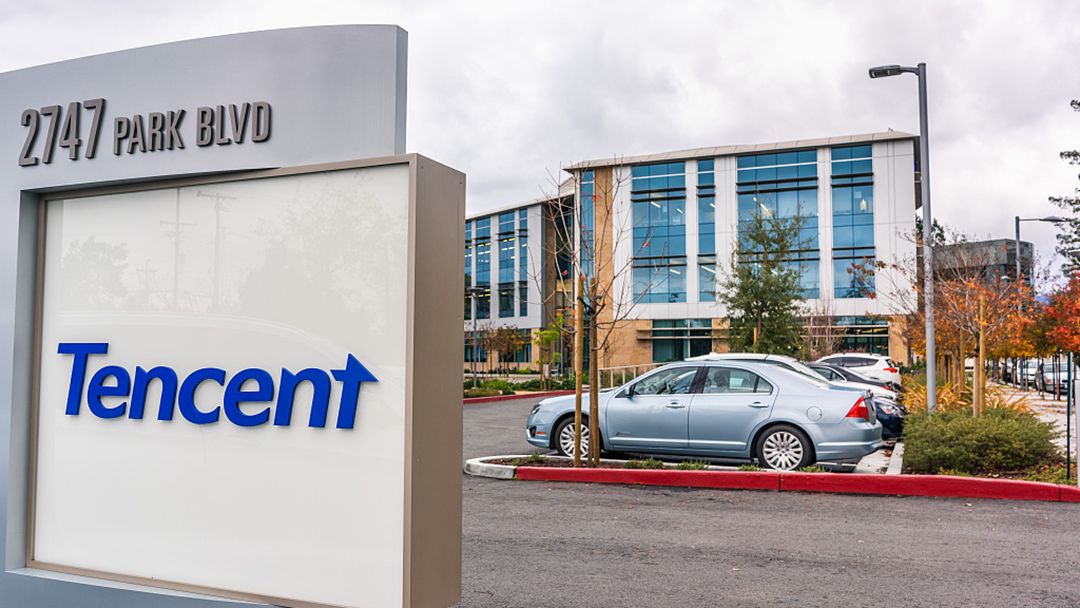
Editor's note: Andy Mok is a research fellow at the Center for China and Globalization. The article reflects the author's opinions and not necessarily views of CGTN.
This year's Tencent Global Digital Ecosystem Summit takes place during one of the most challenging times in recent memory facing the global economy. Largely because of the COVID-19 pandemic, the World Bank expects the global economy to shrink by 5.2 percent this year with advanced economies expected to contract by 7 percent. Moreover, the American government's increasingly antagonistic stance towards China raises questions about the prudence of continuing to rely on inputs from and markets in the U.S.
In response to this double-barreled challenge, China has emphasized a strategy of "dual circulation.' This means that it must rapidly develop domestic manufacturing, distribution, and consumption as the first loop or circulation. But this internal or domestic loop will be supported by an external loop of foreign investment and trade to promote the sustainable growth and development of China's massive domestic market. With more than 500 million middle-income consumers, China's consumption is expected to double to 17 trillion U.S. dollars by 2030, according to Wang Tao, chief China economist at UBS Investment Bank.
One of the biggest challenges facing China's dual circulation strategy is distribution. According to President Xi in a statement during a meeting of the Central Commission for Financial and Economic Affairs (the CPC's top body for developing economic strategies), "The efficiency of logistics is just as important as production efficiency, and is a critical component of raising the overall efficiency of the domestic economy… The modernization level of our country's logistics system is still not high. There exist numerous problems that still need to be solved."

A view of the skyline in Beijing, China /VCG
A view of the skyline in Beijing, China /VCG
Through its focus on industrial innovation, this summit is well-suited to bring together key players in China and abroad to address the distribution challenges highlighted by President Xi. Using digital technologies can more closely link manufacturing and distribution with sales and consumption, thereby reducing waste, miscommunication, and time to market. By doing so, consumers can enjoy greater choice, lower prices, and higher quality.
Also, during the summit, Tencent also releases the Digital China index, which is a good way to track China's progress in this area.
The Digital China Index was first compiled in 2014 to track trends in digital development across China. By combining quantitative data from the most widely used digital platforms in China, such as JD.com, Meituan Dianping, Pinduoduo, Maoyyan Movie, Ctrip, and Tencent Music Entertainment Group, the index covers almost every aspect of digital life in China. Moreover, it aggregates data not only at the national level, but developments at each of China's 31 provinces and autonomous regions and 351 cities are also tracked.
In past years, the cities of Beijing, Shenzhen, Shanghai, Guangzhou, and Chengdu topped the municipal rankings with Guangdong, Jiangsu, Beijing, Zhejiang, and Shandong leading the provincial and autonomous region's indices (Note that Beijing, like Tianjin, Shanghai and Chongqing are cities but have a provincial-level rank). As this data shows, digital development is "fast in the east and slow in the west." Also, the index illustrates that digital development has a cluster effect and is uneven.
China's dual circulation response to the historical challenges of the COVID-19 pandemic and American antagonism offers enormous promise. But it also requires the active participation of platform technology companies that can help address the challenges of distribution and more tightly link manufacturing, distribution, and consumption in China. In particular, platform technology companies can also play a crucial role in linking China's dual circulation strategy's internal and external loops. This year's Tencent Global Digital Ecosystem Summit and the release of the Digital China Index will be worth watching for harbingers of the development of this new national strategy.
(If you want to contribute and have specific expertise, please contact us at opinions@cgtn.com.)